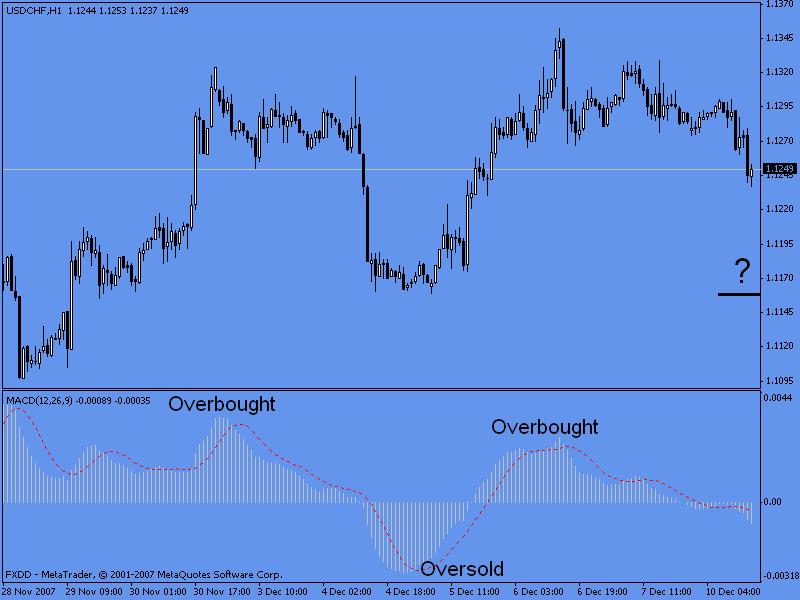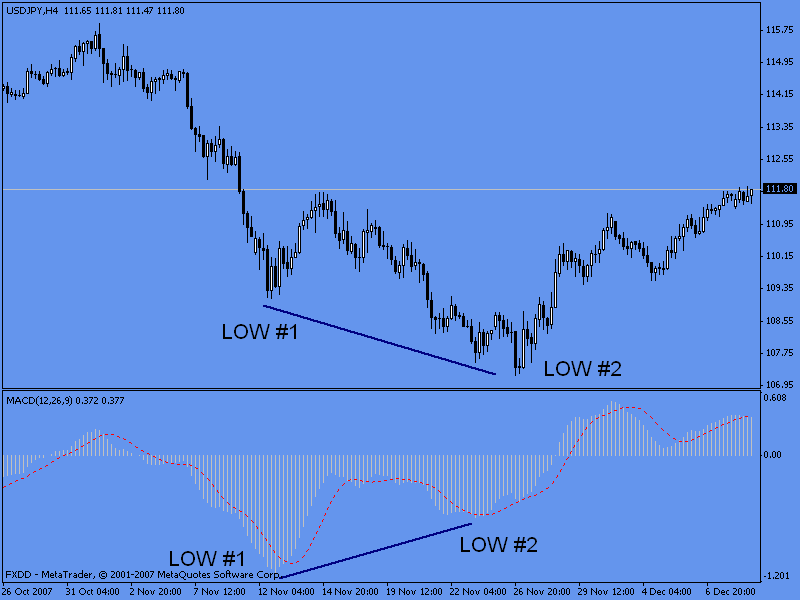[Chart 7]
Every time the MACD gets overbought or oversold the market tends to change direction. But what is considered overbought or oversold with the MACD? Good question... it is relative to the previous highs or lows as there are not “set levels” for the MACD to be considered overbought or oversold. This is one of the weak points if the MACD for this usage.
Although this MACD usage is not very common, there are still traders that use the MACD in this way.
Usage No. 2 - Centerline crossover. When the MACD crosses from negative territory to positive territory, it is called a bullish crossover and indicates positive momentum. On the other hand, when the MACD crosses from positive territory to negative territory it is called a bearish crossover ant it indicates negative momentum.
[Chart 8]
When the histogram crosses from the negative territory to the positive territory it means that the market is gaining positive momentum signaling a long trade.
Usage No 3 - Divergence trading. A divergence occurs when the price behavior differs from the indicator behavior. Theoretically, when the price reaches new highs, the indicator should also reach new highs and the opposite is also true for a bear market. Therefore, when the price makes new highs and the indicator fails to do the same, or when the indicator reaches new highs and the price fails to do the same, a divergence is present. The same is true when the indicator reaches new lows and the price fails to do so or when the price reaches new lows and the indicator fails to do the same.
[Chart 9]
The second low created by the market is clearly at lower levels than the first low. The MACD fails to make a similar low and creates a higher low instead.
This creates a divergence signaling the market isn’t as bearish as it used to be.
Combination of MACD Signals
Please take a look at the following chart and try to determine what we are using to generate the signal (yellow triangle).
[Chart 10]
In this chart we used the divergence signal coupled with the centerline crossover signal as a confirmation. Once the market created the divergence we need the MACD to cross below zero to confirm the signal. Of course we could add the support line break out also (blue horizontal line).





Post a Comment Blogger Facebook